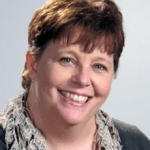
Dr. Brenda Smith Myles
Life can be difficult to navigate when you are on the autism spectrum because often the most important information you need is not directly taught to you. People assume that you know what to do even though you do not. This is known as the “hidden curriculum.” The hidden curriculum is made up of very important information that everyone is expected to know. And if you don’t know this information, it could impact your ability to make friends, get and keep a job, be safe, and have a high quality of life.
How important is the hidden curriculum? Judy Endow MSW, a gifted author and speaker on the autism spectrum, considers the hidden curriculum to be one of the top three areas that should be considered when supporting an individual with ASD. Its impact is broad and can be felt in the school, home, community, in emergency situations, on the job, or in the judicial system.
Despite its importance, little information on the hidden curriculum has been published because it has been largely considered ‘common sense’ and is often only recognized after a hidden curriculum error has occurred. For example, there is a hidden curriculum for nose picking. It is not “don’t pick your nose.” Rather it is “pick your nose in the bathroom and use a tissue.” Violation of this hidden curriculum item can result in a person being avoided or ridiculed, which impacts the employee’s perception on the job.
The hidden curriculum is important everywhere, and is particularly necessary in the workplace. For example these two hidden curriculum items are extremely important for employees to know:
- It is wise to be nice to your coworkers, especially your boss, whether you like them or not.
- The term “lunch hour” may not refer to a clock hour.
How can we make sure that the hidden curriculum is addressed in the workplace and everywhere?
- We can change our neurotypical (NT) behavior to ensure that the hidden curriculum is clearly explained.
- We can support individuals with autism to learn the hidden curriculum in a meaningful way.
Yes She Can provides an innovative employment experience for young women on the autism spectrum by teaching the hidden curriculum at its Girl AGain boutique – as well as other essential skills – in a nurturing business environment. Trainees at GirlAGain learn unwritten rules in the business environment, interacting coworkers and managers, organizational skills, self-concept and more. They learn to ask for the answers to these and other questions:
- What does _________ mean?
- When someone says ________, what do they mean?
- How do I ______?
- Help me understand ________ OR Show me a better way to_______
- Why did (a person) do _______?
GirlAgain is creating a generation of young women who will be job ready assets to employers!
There are several resources that can be used to teach the hidden curriculum.
- Learning the Hidden Curriculum: The Odyssey of One Autistic Adult by Judy Endow (2012)
- The Hidden Curriculum and Other Everyday Challenges for Elementary-Age Children with High-Functioning Autism (2nd ed) by Haley Morgan Myles and Annellise Kolar
- The Hidden Curriculum for Understanding Unstated Rules in Social Situations for Children, Adolescents, and Young Adults (2nd ed) by Brenda Smith Myles, Melissa Trautman, and Ronda Schelvan (2013)
- The Hidden Curriculum of Getting and Keeping Job: Navigating the Social Landscape of Employment by Brenda Smith Myles, Judy Endow, and Malcolm Mayfield (2013) [NOTE: Yes She Can uses this book with our trainees]
About our guest blogger:
Brenda Smith Myles, Ph.D. is an associate professor in the Department of Special Education at the University of Kansas where she co-directs a graduate program in Asperger Syndrome and autism. She is also a consultant with the Ohio Center for Autism and Low Incidence (OCALI) and the Ziggurat Group.
Dr. Myles has written numerous articles and books on Asperger Syndrome and autism and is the winner of the Autism Society of America’s outstanding literary work.
Dr. Myles is on the executive boards of the Organization for Autism Research, Asperger Syndrome Coalition of the United States, Maap Services Inc., Aspen, the International Council for Learning Disabilities, and Advocates for Individuals with High Functioning Autism, Asperger’s Syndrome, and Other Pervasive Developmental Disorders. She is also the editor of Intervention in School and Clinic.
I have a question. I am a consultant and educator in all levels (children with ASD, their parents and teachers), in Mexico. I constantly use examples from The Hidden Curriculum in spanish. I am writing a manual in Spanish, with intervention strategies. I would like to use some examples from The Hidden Curriculum and I want to know if I need a special permission in order to do so, or if it will be fine just to mention Brenda Smith Myles suggestions in The Hidden Curriculum.
Hello Alejandra, I will share your comment with Dr. Myles.
perfect explanation very cool and useful
keep spirit and keep writing useful articles
Very useful, Thank you for the given information